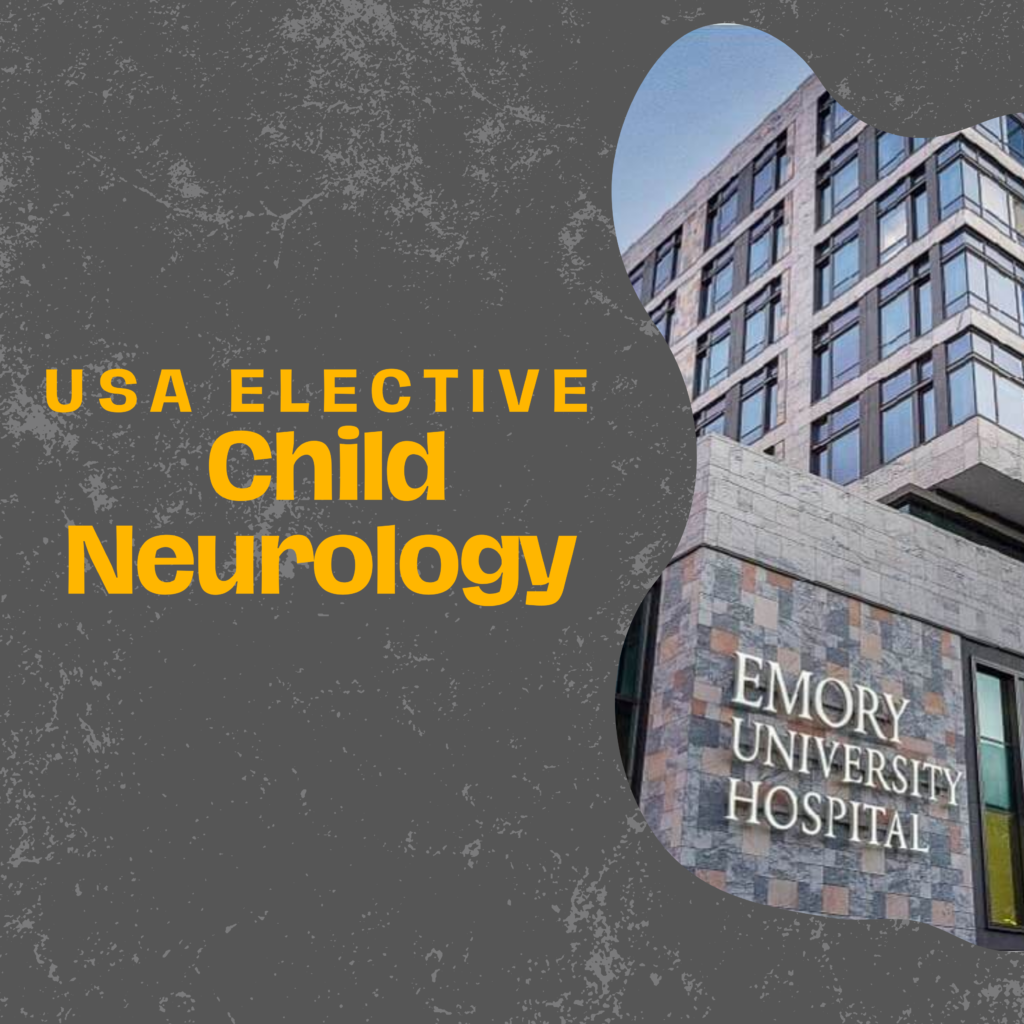Child Neurology – USA Elective

Child Neurology
Emory University Elective Course
Global Exchange Program
Child Neurology Elective Course – USA
Emory University Hospital, Atlanta, Georgia – Children’s Healthcare Atlanta
Neuropedia is proud to offer an exceptional opportunity for medical students who are passionate about neurology and pediatrics. As part of our Global Exchange Program, we provide an elective Child Neurology course at the prestigious Emory University Hospital in Atlanta, Georgia – Children’s Healthcare Atlanta. This program allows students to gain experience, learn from world-renowned specialists, and work in a hospital known for its cutting-edge research and patient care.
About the Elective Course
The Child Neurology elective at Emory University Hospital is designed to immerse students in all aspects of pediatric neurology, from clinical practice . Participants will work alongside leading neurologists and gain invaluable insights into diagnosing, managing, and treating neurological conditions in children.
Key Highlights of the Elective:
- In-depth clinical exposure: Work closely with experienced child neurologists and participate in patient consultations, clinical rounds, and case discussions.
- Professional mentorship: Receive one-on-one mentorship from leading faculty, with guidance on pursuing a career in pediatric neurology.
- Cultural exchange: Experience a new healthcare environment and expand your global perspective.
Program Duration
The elective is structured as a 3- to 4-week program, with flexibility to match each student’s availability and goals.
Eligibility Criteria
- Medical students in their clinical years with an interest in neurology or pediatrics.
- Proficiency in English to ensure effective communication in the clinical environment.
- A strong academic record and commitment to learning.
Fees :
- 200 JD, paid upon acceptance for Neuropedia.
- The fee covers application and administrative costs.
How to Apply
Interested students can apply by filling the application form below :
Honoring Our Vision
This program honors Neuropedia’s commitment to fostering global opportunities and honoring the legacy of dedicated neurologists who have impacted the field.
For more information, don’t hesitate to get in touch with us info@neuropedia.net



